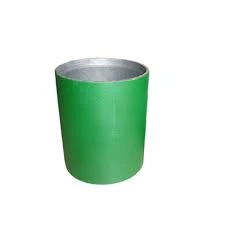- Afrikaans
- Albanian
- Amharic
- Arabic
- Armenian
- Azerbaijani
- Basque
- Belarusian
- Bengali
- Bosnian
- Bulgarian
- Catalan
- Cebuano
- Corsican
- Croatian
- Czech
- Danish
- Dutch
- English
- Esperanto
- Estonian
- Finnish
- French
- Frisian
- Galician
- Georgian
- German
- Greek
- Gujarati
- Haitian Creole
- hausa
- hawaiian
- Hebrew
- Hindi
- Miao
- Hungarian
- Icelandic
- igbo
- Indonesian
- irish
- Italian
- Japanese
- Javanese
- Kannada
- kazakh
- Khmer
- Rwandese
- Korean
- Kurdish
- Kyrgyz
- Lao
- Latin
- Latvian
- Lithuanian
- Luxembourgish
- Macedonian
- Malgashi
- Malay
- Malayalam
- Maltese
- Maori
- Marathi
- Mongolian
- Myanmar
- Nepali
- Norwegian
- Norwegian
- Occitan
- Pashto
- Persian
- Polish
- Portuguese
- Punjabi
- Romanian
- Russian
- Samoan
- Scottish Gaelic
- Serbian
- Sesotho
- Shona
- Sindhi
- Sinhala
- Slovak
- Slovenian
- Somali
- Spanish
- Sundanese
- Swahili
- Swedish
- Tagalog
- Tajik
- Tamil
- Tatar
- Telugu
- Thai
- Turkish
- Turkmen
- Ukrainian
- Urdu
- Uighur
- Uzbek
- Vietnamese
- Welsh
- Bantu
- Yiddish
- Yoruba
- Zulu
pipe mill
The Evolution and Importance of Pipe Mills in Modern Industry
Pipe mills play a crucial role in the production of steel pipes and tubes, which are foundational components across diverse sectors, including construction, automotive, and energy. The process of pipe manufacturing has evolved significantly over the years, driven by technological advancements and the growing demands of various industries. In this article, we will explore the intricacies of pipe mills, their manufacturing processes, and their significance in contemporary applications.
Understanding Pipe Mills
A pipe mill is a specialized manufacturing facility designed to produce pipes and tubes from steel or other metals. The main types of pipes manufactured include seamless and welded pipes. Seamless pipes are made from a solid round steel billet, which is heated and then shaped into a pipe through processes like extrusion or rotary piercing. On the other hand, welded pipes are produced by joining two edges of a sheet of metal through welding techniques, which may involve electric resistance, submerged arc, or laser welding.
Manufacturing Process
The manufacturing process in pipe mills typically involves several stages, beginning with raw material preparation
. The quality of raw steel is paramount, as it directly affects the durability and performance of the final product. Once the raw material is ready, the following steps unfold1. Heating The steel billets or sheets are heated to a high temperature, making them malleable for shaping. 2. Forming For welded pipes, the heated sheet is formed into a cylindrical shape and the edges are brought together for welding. For seamless pipes, the heated billets are pierced and elongated to create the desired diameter and thickness.
3. Welding In the case of welded pipes, various welding technologies are employed to ensure a strong bond. Quality control measures are essential during this stage to prevent defects in the weld seam.
4. Sizing and Cutting The formed pipes are then sized to the required dimensions, which might include specific diameters and wall thicknesses. Any excess material is cut away to achieve uniformity.
pipe mill

5. Testing and Inspection After the pipes are formed and cut, they undergo a series of tests to ensure their strength, integrity, and compliance with industry standards. These tests may include hydrostatic testing, ultrasonic testing, and x-ray inspection.
6. Coating and Finishing Finally, pipes may be coated to prevent corrosion and enhance durability. This can involve galvanization, painting, or the application of protective films.
Applications in Various Industries
The versatility of pipes produced in mills makes them indispensable across various sectors. In construction, pipes are used for structural purposes, plumbing, and HVAC systems. The automotive industry relies on pipes for exhaust systems, fuel lines, and other components that require rigidity and reliability. In the energy sector, especially in oil and gas, high-strength pipes are essential for safely transporting resources through pipelines.
Moreover, with the rise of renewable energy technologies, pipe mills have adapted to supply pipes for wind farms, solar power plants, and geothermal systems. As the world transitions toward green energy, the demand for high-quality piping solutions continues to grow, prompting ongoing innovations within pipe manufacturing.
The Future of Pipe Mills
The future of pipe mills is likely to be shaped by advancements in automation, smart manufacturing, and sustainability. Industry 4.0 technologies, including IoT and AI, are being integrated into pipe production processes, enhancing efficiency and reducing waste. Furthermore, as environmental concerns become progressively more pressing, pipe mills are exploring ways to minimize their carbon footprint by using recycled materials and implementing eco-friendly practices.
Conclusion
Pipe mills are essential to the fabric of modern industry, providing critical infrastructure and components that facilitate numerous applications. As technology continues to advance and industry demands evolve, pipe mills will remain at the forefront of manufacturing innovation, helping to meet the challenges of the future while ensuring quality and sustainability in the production of pipes. The ongoing evolution of these facilities underscores their importance in supporting global economic growth and infrastructural development.
-
Tubing coupling plays a significant role in the chemical industryNewsApr.03,2025
-
The Importance of Tubing Crossover in Various Industrial FieldsNewsApr.03,2025
-
The characteristics and important role of Tubing Pup JointNewsApr.03,2025
-
Characteristics and functions of Pup jointNewsApr.03,2025
-
Characteristics and Functions of Pup Joint PipeNewsApr.03,2025
-
Application of Coupling Casing in Various ScenariosNewsApr.03,2025







